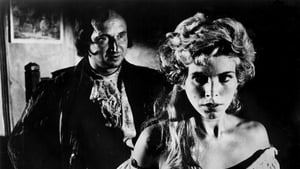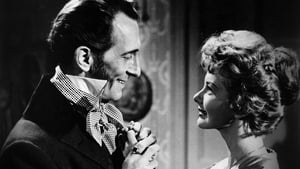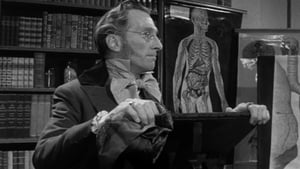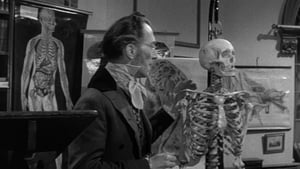Video Sources 0 Views
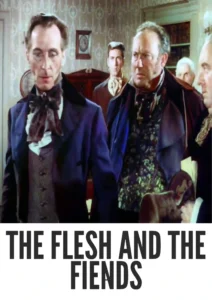
Download The Flesh and the Fiends (1960) Colorized HD | Peter Cushing | Horror Thriller Classic
Synopsis

Delve into the sinister world of 19th-century Edinburgh with The Flesh and the Fiends, a gripping horror thriller from 1960, now beautifully colorized for a uniquely disturbing viewing experience. This film, starring Peter Cushing and Donald Pleasence, presents a horrifying blend of historical drama, suspense, and visceral horror centered around the infamous Burke and Hare murders. Perfect for fans of classic horror, medical thrillers, and those fascinated by true crime stories, this HD download offers a chilling exploration of ambition, morality, and the dark side of scientific progress. The film was also released under the titles Mania, The Fiendish Ghouls, and Psycho Killers.
Set in 1828 Edinburgh, The Flesh and the Fiends tells the gruesome story of Dr. Robert Knox (Peter Cushing), a brilliant anatomist whose relentless pursuit of medical knowledge leads him down a dangerous path. Due to the scarcity of legally obtained cadavers, Dr. Knox relies on “resurrection men” to supply his anatomy school with bodies for research.
Enter William Burke (George Rose) and William Hare (Donald Pleasence), two opportunistic criminals who quickly discover that murdering locals and selling their fresh corpses to Dr. Knox is a lucrative business. As the body count rises, Dr. Knox’s assistant, Dr. Mitchell (Dermot Walsh), and a young student, Chris Jackson (John Cairney), grow increasingly suspicious of the origins of the cadavers.
When Jackson’s girlfriend, Mary Patterson (Billie Whitelaw), becomes one of Burke and Hare’s victims, Jackson uncovers the truth and confronts the murderous duo, leading to his own demise. The escalating crimes of Burke and Hare eventually attract the attention of the authorities and an outraged public, resulting in a dramatic trial. Though Dr. Knox manages to avoid legal repercussions, he is left to grapple with the moral implications of his actions, forever haunted by the knowledge that his ambition fueled a series of horrific murders.
The Flesh and the Fiends boasts a stellar cast, bringing depth and intensity to this macabre tale:
-
Peter Cushing as Dr. Robert Knox
-
June Laverick as Martha Knox
-
Donald Pleasence as William Hare
-
George Rose as William Burke
-
Renée Houston as Helen Burke
-
Dermot Walsh as Dr. Geoffrey Mitchell
-
Billie Whitelaw as Mary Patterson
-
John Cairney as Chris Jackson
-
Melvyn Hayes as Daft Jamie
The Flesh and the Fiends expertly blends the genres of horror, thriller, and historical drama. Its dark atmosphere, gruesome subject matter, and exploration of moral ambiguities make it a standout entry in British horror cinema.
The Flesh and the Fiends, released in 1960, revisits the infamous Burke and Hare murders that shook 19th-century Edinburgh. The film is not the first nor the last to dramatize these events; however, it distinguishes itself through its unflinching depiction of the crimes and its focus on the moral compromises of Dr. Knox. It was also the first horror movie to feature Peter Cushing that was not produced by Hammer Films1.
This colorized version of The Flesh and the Fiends has been carefully restored using advanced digital techniques to enhance the visual impact while preserving the film’s original atmosphere. The colorization process involved detailed analysis of the original black and white footage, with meticulous attention paid to historical accuracy and the creation of a visually compelling palette. While the exact software remains proprietary, the methods included sophisticated algorithms for color assignment and image enhancement. This painstaking process breathes new life into the characters and settings, making the story even more captivating for modern audiences. The colorization introduces the film to a broader audience, ensuring its legacy for future generations.
-
: John Gilling
-
: John Gilling, Leon Griffiths
-
: Monty Berman
-
: Jack Slade
-
: Triad Productions
-
: Regal Films
-
: 96 minutes
-
: MP4
-
: HD (1080p)
-
: Compatible with most devices, including smartphones, tablets, computers, and smart TVs.
The Flesh and the Fiends (1960) is regarded as a standout entry in British horror cinema, praised for its gripping narrative, strong performances, and willingness to tackle complex moral themes. Though disturbing, it remains a compelling and thought-provoking example of classic horror filmmaking.
-
: What is The Flesh and the Fiends about?
-
A: The Flesh and the Fiends is a horror thriller about Dr. Knox, who procures cadavers from the murderers Burke and Hare.
-
-
: Is The Flesh and the Fiends (1960) based on a true story?
-
A: Yes, the film is based on the real-life Burke and Hare murders that occurred in 1828 Edinburgh.
-
-
: Is this version of The Flesh and the Fiends colorized?
-
A: Yes, this version has been professionally colorized to enhance the viewing experience.
-
-
: What makes The Flesh and the Fiends interesting for horror fans?
-
A: The Flesh and the Fiends offers a chilling exploration of ambition, morality, and the dark side of scientific progress, set against the backdrop of a true crime story.
-
-
: What is the download format?
-
A: The download format is MP4, which is compatible with most devices.
-
-
: What resolution is the download?
-
A: The resolution is HD (1080p), providing a high-quality viewing experience.
-
Watch The Flesh and the Fiends Today!
